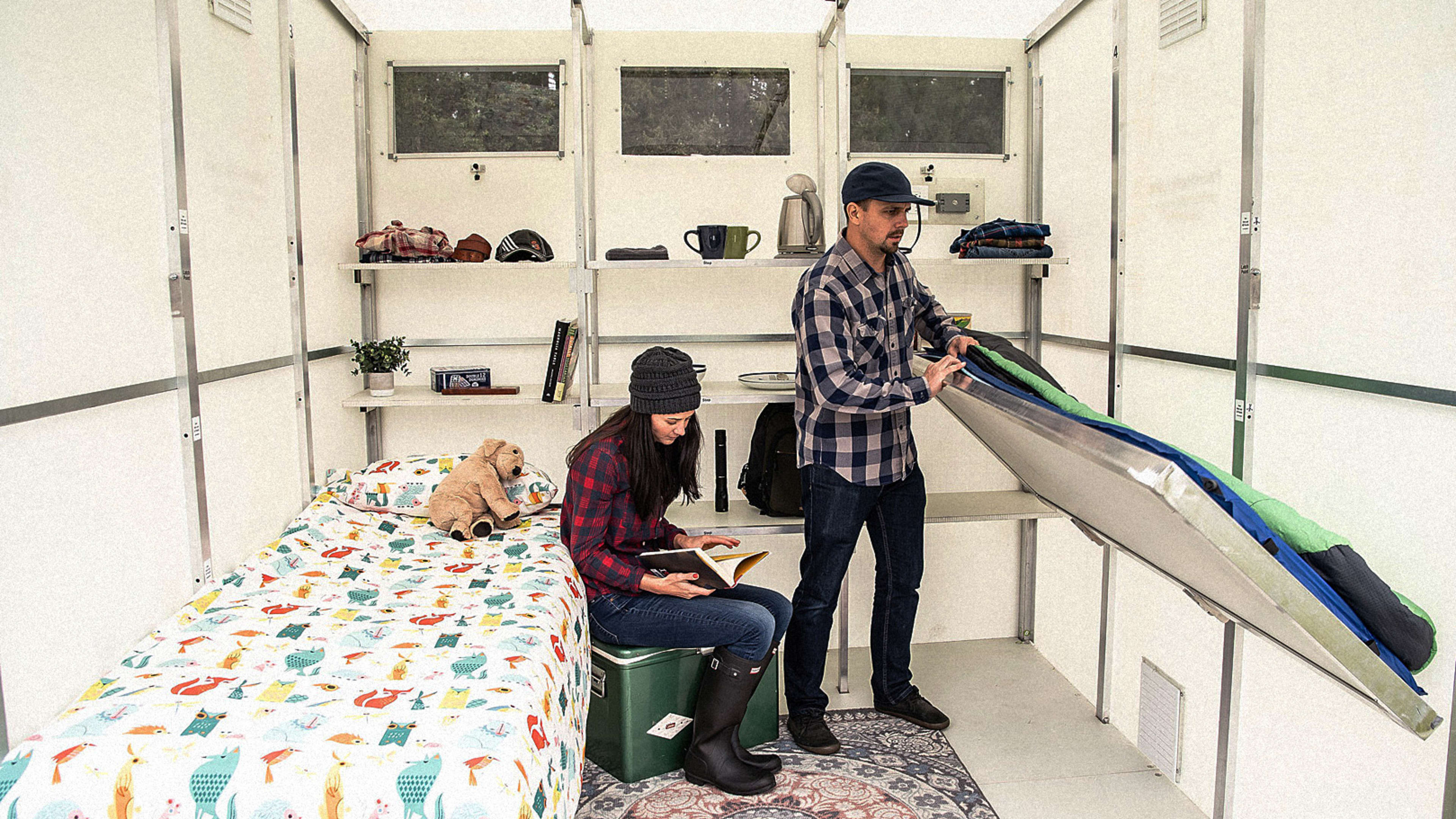Two years ago, Tacoma, Washington, declared a state of emergency over homelessness. With 1,300 people experiencing homelessness in the surrounding Pierce County, and hundreds of them living on Tacoma’s streets, officials kicked off a three-phase plan to address the issue. They deployed rapid resource pop-ups, such as hand-washing stations and portables, and worked to expand overall homelessness services throughout the county. They also set up temporary shelters, including a large tent over dozens of individual tents to help protect the tent dwellers from inclement weather.
But the city wanted to move beyond solutions that just mitigated the harm of living on the street, and find a way to move people into emergency housing that was still temporary, but more protective than just a tent. The solution was a small village of tiny houses, produced by a nearby company that was working on emergency shelters for disaster response.
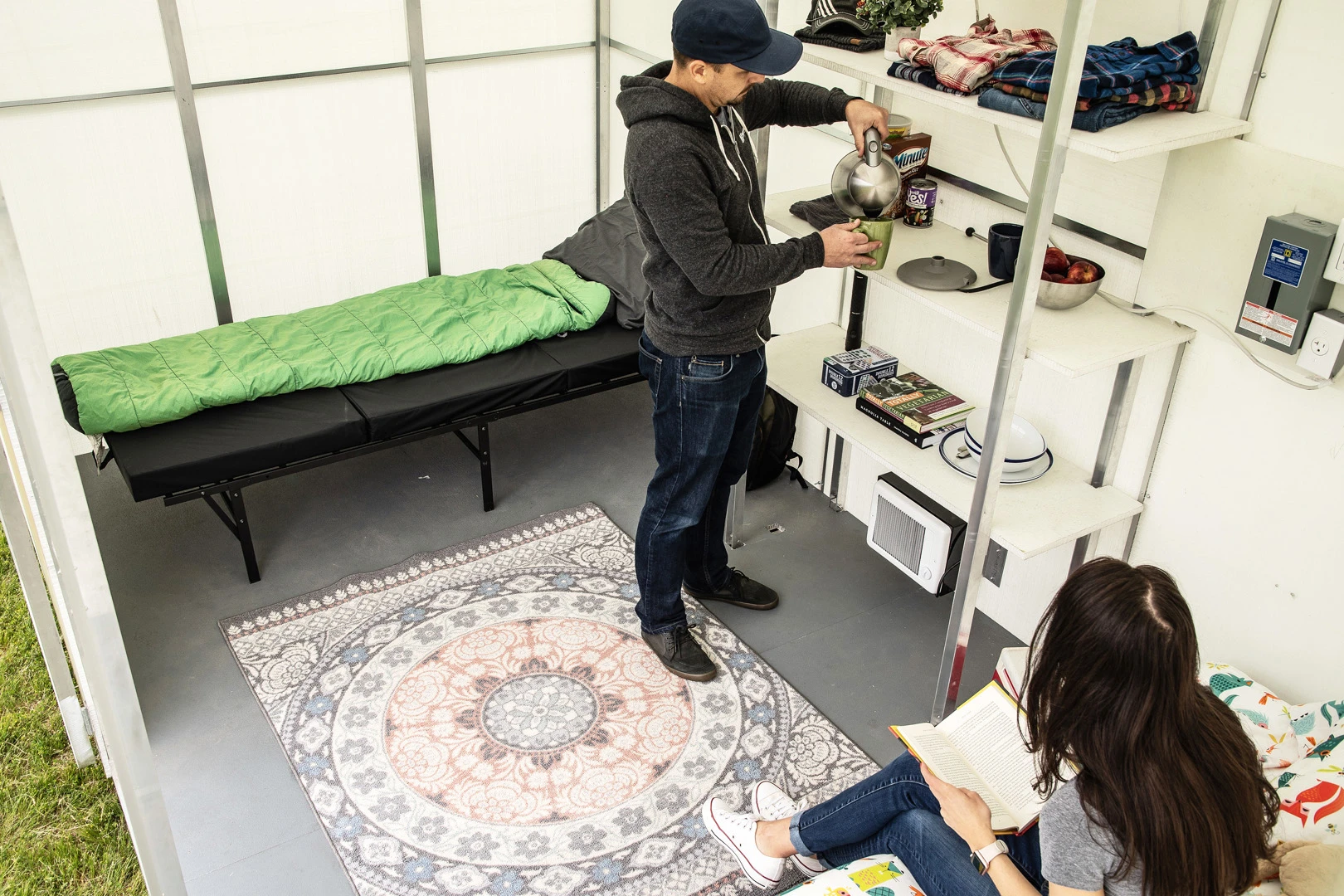
Although there have been a few instances of leakage and some trouble with residents stuffing their vents, over the past two years these structures have proved extremely valuable in Tacoma, says Erica Azcueta, homelessness and household stability program manager for the city. They’ve provided not only a robust shelter that can withstand 110 mile-per-hour winds and 25 pounds-per-square-foot of snow, but also an effective transitional space for residents.
Tacoma ultimately bought 40 Pallet shelters. Twenty were set up in a temporary housing space, while the rest were kept on hand in case there was a natural disaster. Today, the city uses the individual shelters as a type of incentive program. If a resident is doing well in the tents, working with caseworkers, and developing a future-housing plan, then they may be eligible for the Pallet shelters.
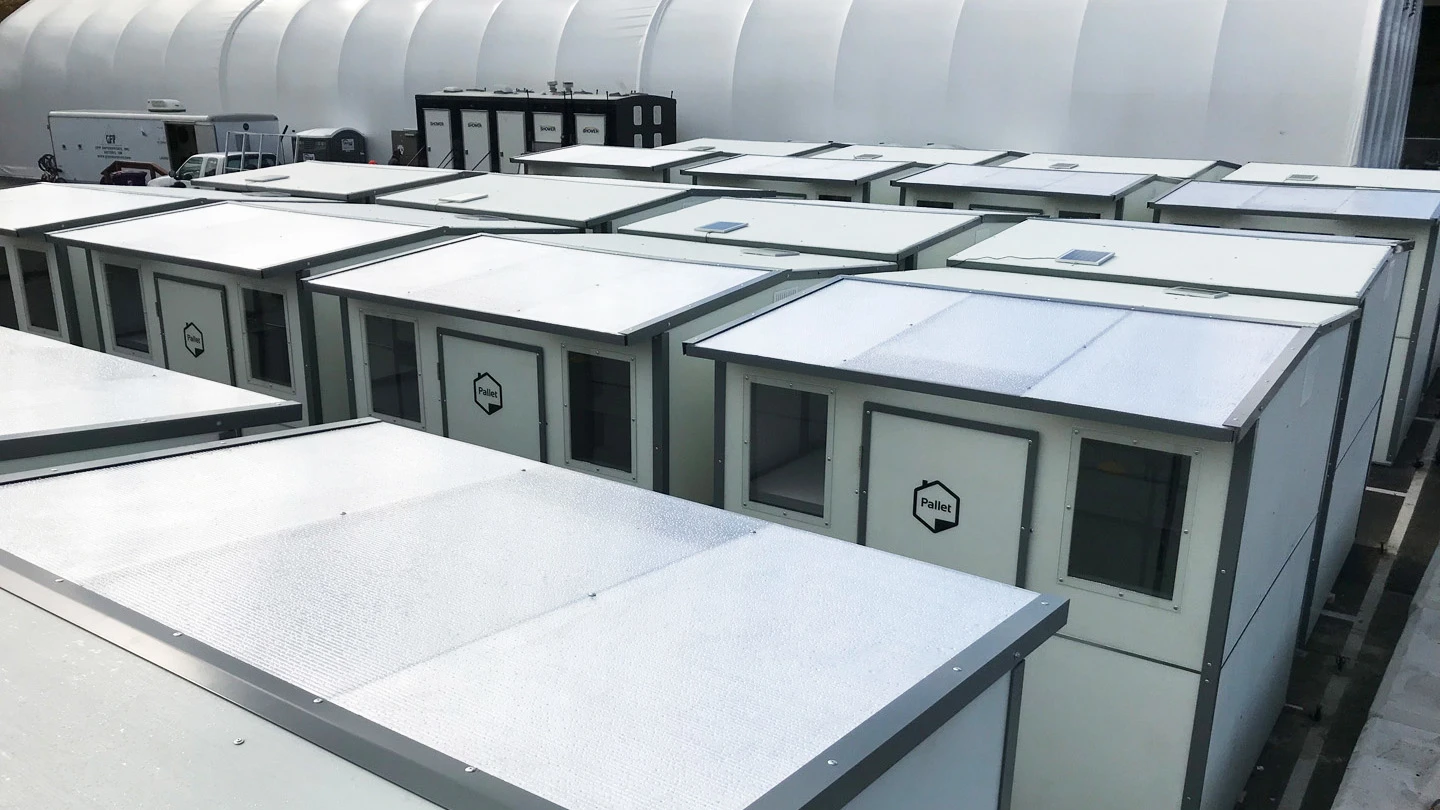
At a time when rising rents have left cities across the U.S. dealing with major homelessness crises, having quickly deployable emergency housing options has become especially important. Pallet structures are one way to fill this need.
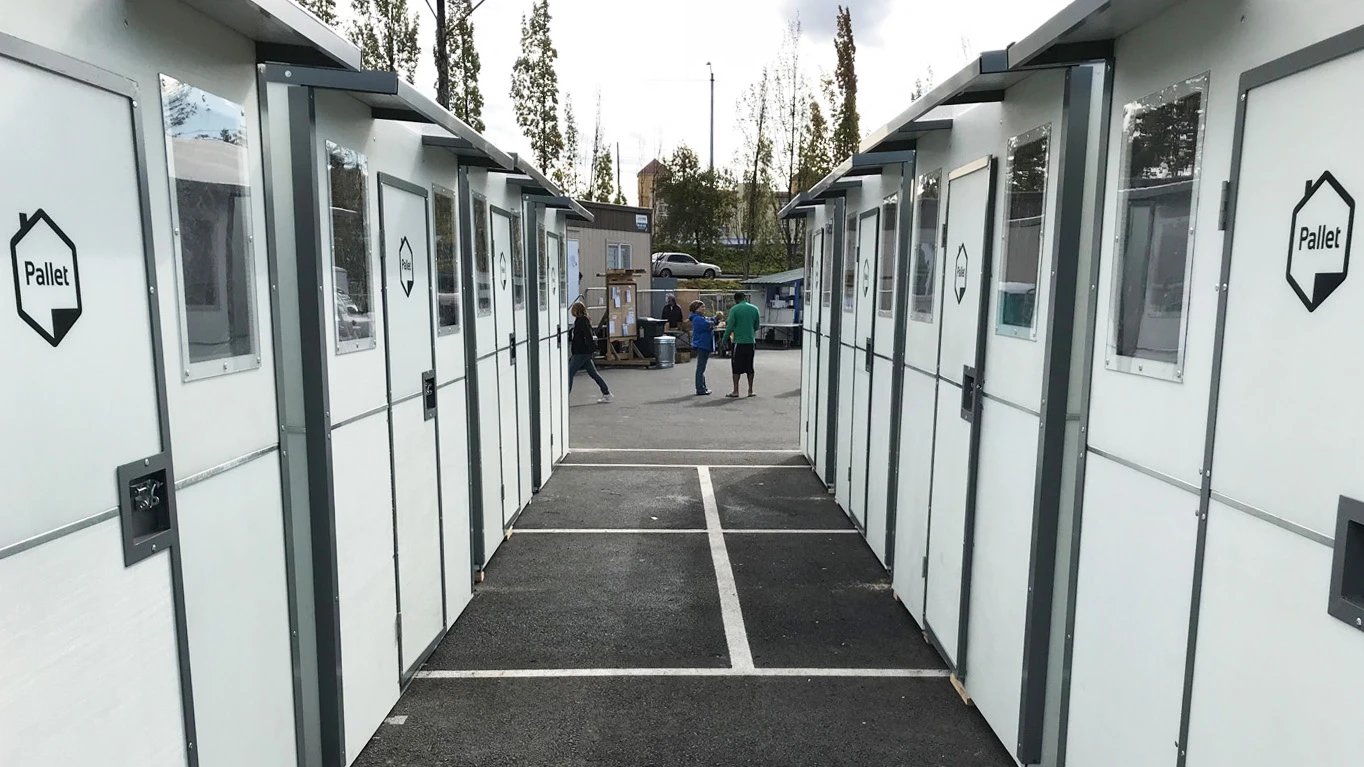
“There’s a lot of cities that are dealing with homelessness that are looking for a temporary turn-key solution that doesn’t require them to go through these really extreme approaches of getting building permits and building permanent shelters,” says King. “The interest is really growing in terms of using this as a cost-effective, temporary solution while they’re building permanent affordable housing, which takes a long time.”
The fact that they have fit in so well within the homeless housing effort is especially striking, given that they were never designed for that purpose. The original concept came from King’s husband, a general contractor and fire fighter, who set out to create easily deployable, reusable, and lightweight shelters that could be used in disaster response.

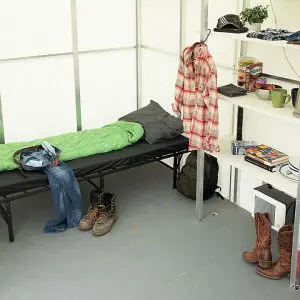
The company is still very small. It has eight executive and production employees (the latter group each have a personal history with homelessness, addiction and/or criminal justice). It’s sold 50 shelters to five customers in Oregon and Washington, and is about to close a new round of fundraising.
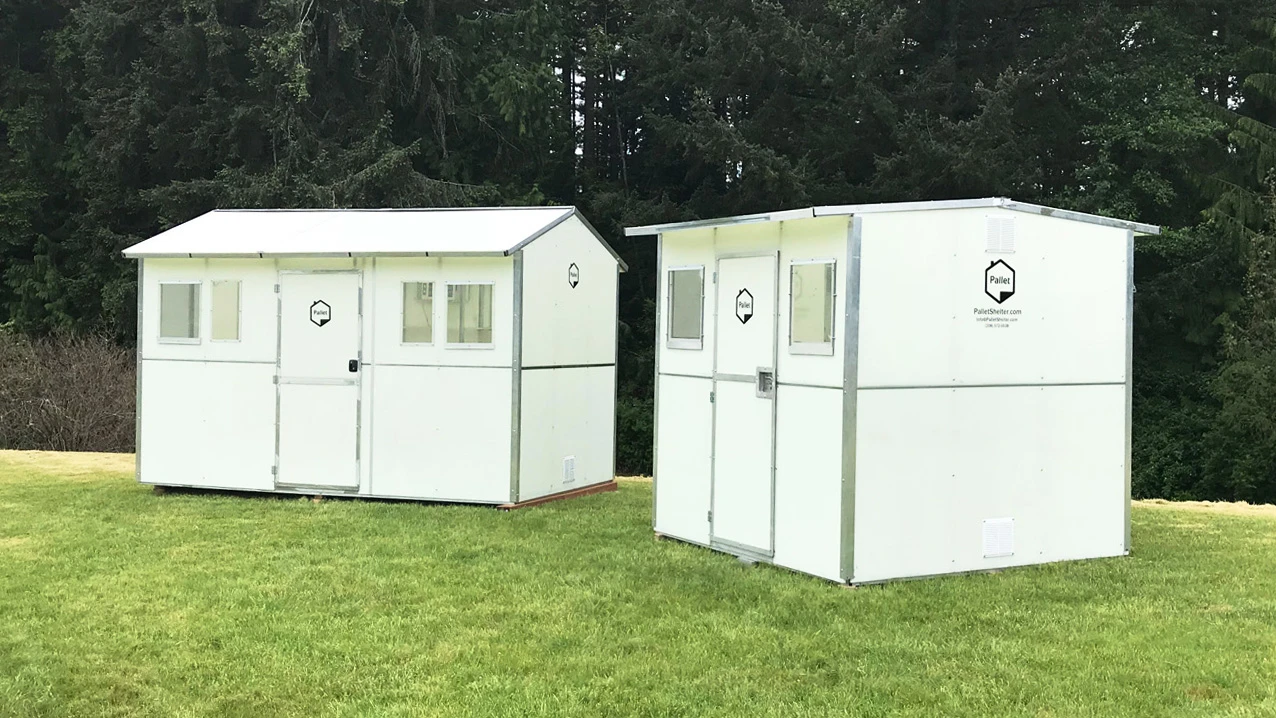
“The reality is you can’t just shove people into an overnight shelter and check the box and think it’s good because that’s not solving the problem,” she says. “What people need is stability. And when people have a door and they have a roof and they have case management, they have beds in these structures, it allows for family units to stay together and for greater stability so that people can actually get that housing and services that they need.”
Last month, she held a demonstration outside city hall, in which Pallet representatives showed how they could set up the 64-square-foot model in 20 minutes without tools. She said she would like to see funding in this year’s budget go to these structures, as long as it’s coupled with supportive services, such as case managers, and funding for more long-term housing.
These shelters were never intended to be a permanent housing space, said King. But for people living on the streets of Seattle or stranded after the next hurricane or even working temporarily in the agriculture field, they could be an especially effective temporary option.
Hallie Golden is a freelance journalist based in Seattle. Her work has appeared in the New York Times, Associated Press, the Economist, and the Guardian.
Recognize your brand’s excellence by applying to this year’s Brands That Matter Awards before the early-rate deadline, May 3.
